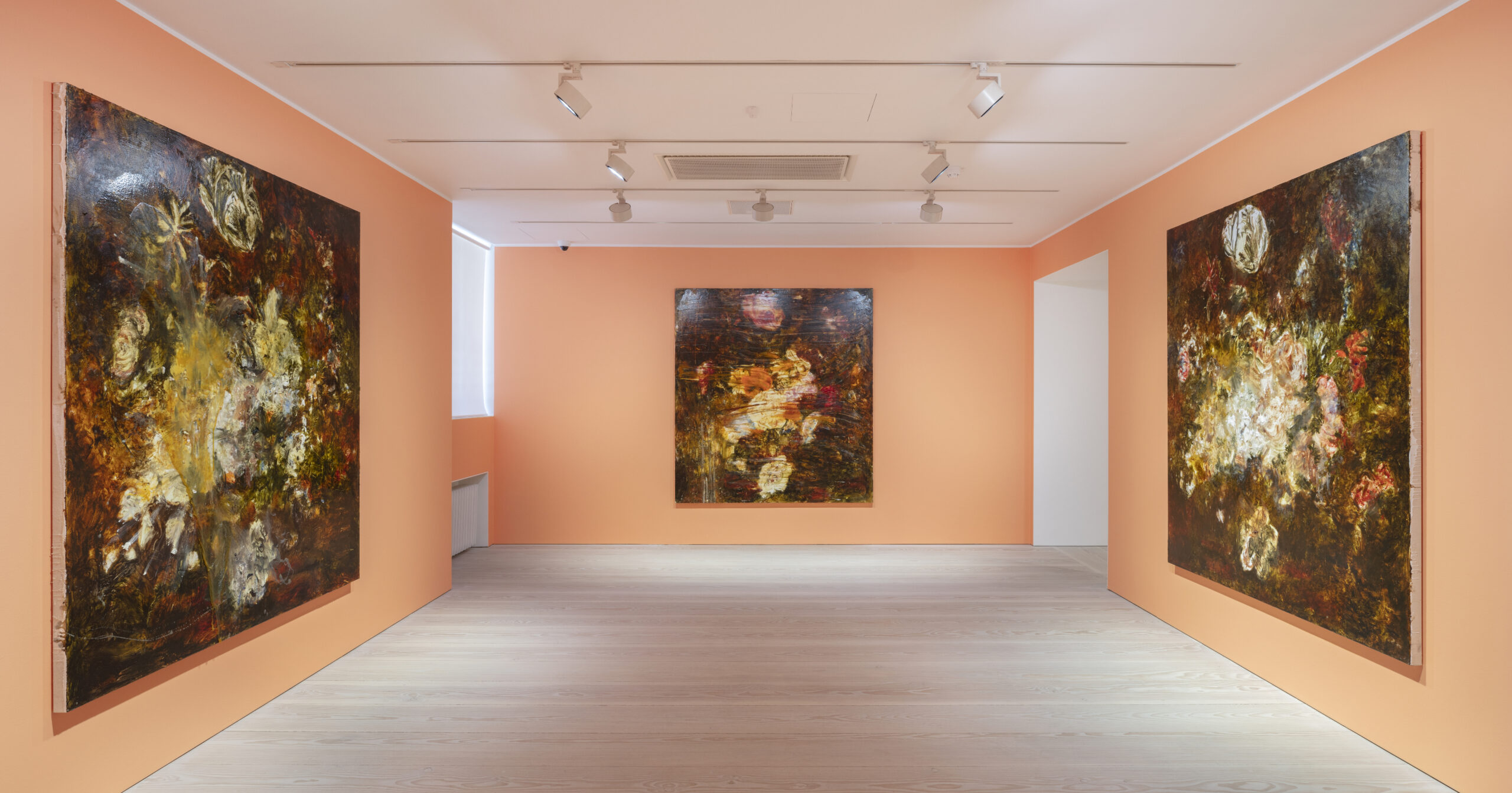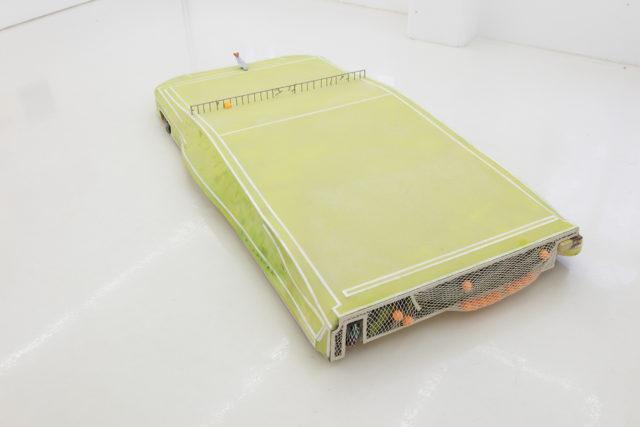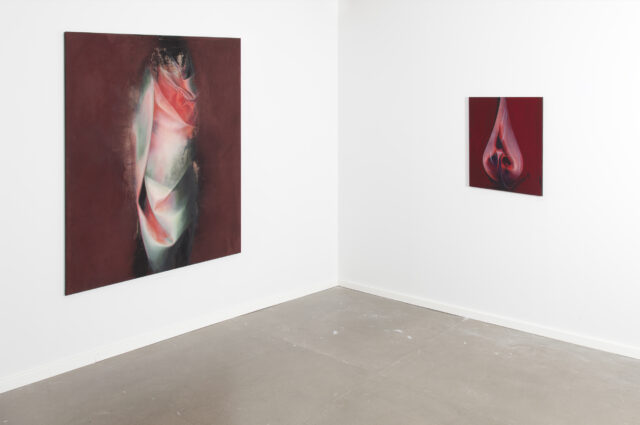Painting has long held its own as a medium of art across the centuries. Every once in a while, art is pronounced dead, and thereby painting as well, yet every generation produces new artists who decide to become painters. Is any art still Finnish today? Does it need to be? In a global village, the issue of national identity often seems superfluous or at least artificial. How does Finnish painting differ from painting in other Nordic countries? How should we judge the work of an artist who trained in Berlin or Copenhagen? And what about a foreign artist who has settled in Finland, who produces new imageries and contributes to the construction of a new Finnish identity? We inevitably live and work in and from a specific geographical location. With the internet, the contemporaneity has become simultaneous and propels us towards others with virtually zero latency.
But I cannot ignore the fact that the idea of Finnish art and Finnish painting raises expectations because of our location on the periphery of northern Europe. There is an underlying assumption of some original and daring quality, slightly mysterious yet minimal and aesthetically refined. On the other hand, the horizon of expectation may include assumptions of art that is distinctive in its palette and form, stemming from the vast seasonal contrasts in the amount of light, not unlike that of Marimekko print patterns. And thrilled by the interest thus shown in us, we want to be worthy of that interest and demonstrate our distinctiveness.
I mentally construct all sorts of categories of contemporary painting to which I could link my favourite painters as well as a host of other artists while also managing to cover the entire field of painting in its rather extended scope. Dredging from my memory the classic division of painting into portraits, still lifes, landscapes, religious and history painting, I wonder whether similar divisions of contemporary painting might be drawn up, divisions that would acknowledge existing genres, practices or themes? In what follows, I will attempt to do just that.
I want to start by highlighting a continuum of works that by virtue of their structure and geometric variation in surface and depth produce abstractions, or very concrete paintings-as-object. Such works employ a literal take of the pictorial space of painting. They seek to undermine our optical belief in visual illusion while reminding us of the physicality of the canvas and the space surrounding it. Given the Finnish penchant for engineering, this category has been going strong since early modernity.
The nature relationship in Alvar Aalto’s architecture and the subsequent methodical approach of the constructivists, as well as strict disciplinary boundaries, have produced a reductive and rational ethos that is both purposeful and generates a natural scale. The belief in a rational world, in the triumph of reason, still has its supporters, yet there is also room for the organic, for machine romanticism and for doubt. This category covers artists who have deliberately abandoned painting. They have deconstructed the tradition into its constituent parts while still playing with the formal language and gestures of painting within the cross-pressured setting of flat surfaces and composition. Ultimately, it is always about the apperception and appropriation of space in one way or another, while the scale and materials vary.
Secondly, there is the counterforce: expression, strong emotion and their aftereffects. This category often gives precedence to the artist’s identity and life events, of which the paintings are traces or evidence of sorts. Instead of precision and order, we see violent extrusions, lacerated canvases, the very act of painting and what remains of it, in all its glory. With close reading, we can also find tell-tale signs of lived life, triumphs and trifles, spills, mislaid disposable gloves and fingerprints. From a distance, it appears either as heaven or hell. The content is reinforced by autobiographical elements and occasionally even by personal dramas leaked to the public. The breadth covers the defining arcs of life, from sexuality to moments of splendour, to defiance, destruction and death lurking around the corner. These are the very reasons why such paintings are felt to be authentic and empowering, sometimes dark and moody, yet always true to life.
The third category consists of paintings that, true to the general conception of Finnish art, feature references to nature. These pictures may refer to nature by virtue of their motifs, or they may be created using processes that draw a parallel to surfaces shaped by nature. Illusions unfold before our eyes, from mountain ranges to seascapes, ponds, puddles and deep forest bosoms. They invite us to admire and appraise the artistry or the natural processing of colours, both close up and from a distance. Clouds and games of colour, blends, layers, and glazes give rise to art-enabled perceptions of worlds ranging from the microscopic to the cosmological.
We may see lily ponds, hazy expanses, tree canopies, fleeting or obliterated verges, underwater worlds and visions shaped by the undulations of reeds. At the same time, the range of materials, with pigments and dyes collected from nature and ground by hand, add strata to the meaning horizon of the works, connecting them unexpectedly to environmental issues, our carbon footprint and to how we navigate and understand a world constrained by environmental threats.
Humans are famously storytellers, so my fourth category is narrative painting. Stories are often told concisely with just one image, but it is of course possible to create series of paintings that tell the story one scene or chapter at a time. These paintings create a stage inhabited by a protagonist or a host of figures. The nature of the situation or scene and thereby the narrative is directed by the setting in which the characters are placed.
The subject matter of narrative painting ranges widely. Politics and current affairs, genders and identities, evolving family configurations, political and public figures and fictional characters borrowed from other art forms alternate or go hand-in-hand in the paintings. The painter may rely on maximum fidelity in detail, on brilliant illusion and tangible likeness, but may also use stylisation and characterisation to depict human nature and personal traits in broad strokes. Viewers are drawn in by the tableau and the interplay between people and situations. Viewers will inevitably add their own stories, or at least interpretations, to the picture, thus linking the subject of the painting to their own reality.
Have I managed to cover all the genres in contemporary painting? Not to worry, you can continue the exercise and create a whole series of interconnecting and overlapping divisions yourself. Take, say, one part rigorous geometry and three parts nature painting, or two parts storytelling and two parts brimming emotion and a dash of wildly extruded paint. Feel free to produce new and more precise categories, invent apt keywords and adjoin them to adjectives that describe the various qualities of painting. And while you’re at it, you can also turn your attention to other forms of art and see how the contemporary experience is framed and delimited in them. A blank canvas (as tabula rasa) is at once a concept, a physical object and a set of projected expectations that await execution and interpretation.
Leevi Haapala
Director, Museum of Contemporary Art Kiasma
Translation by Tomi Snellman



